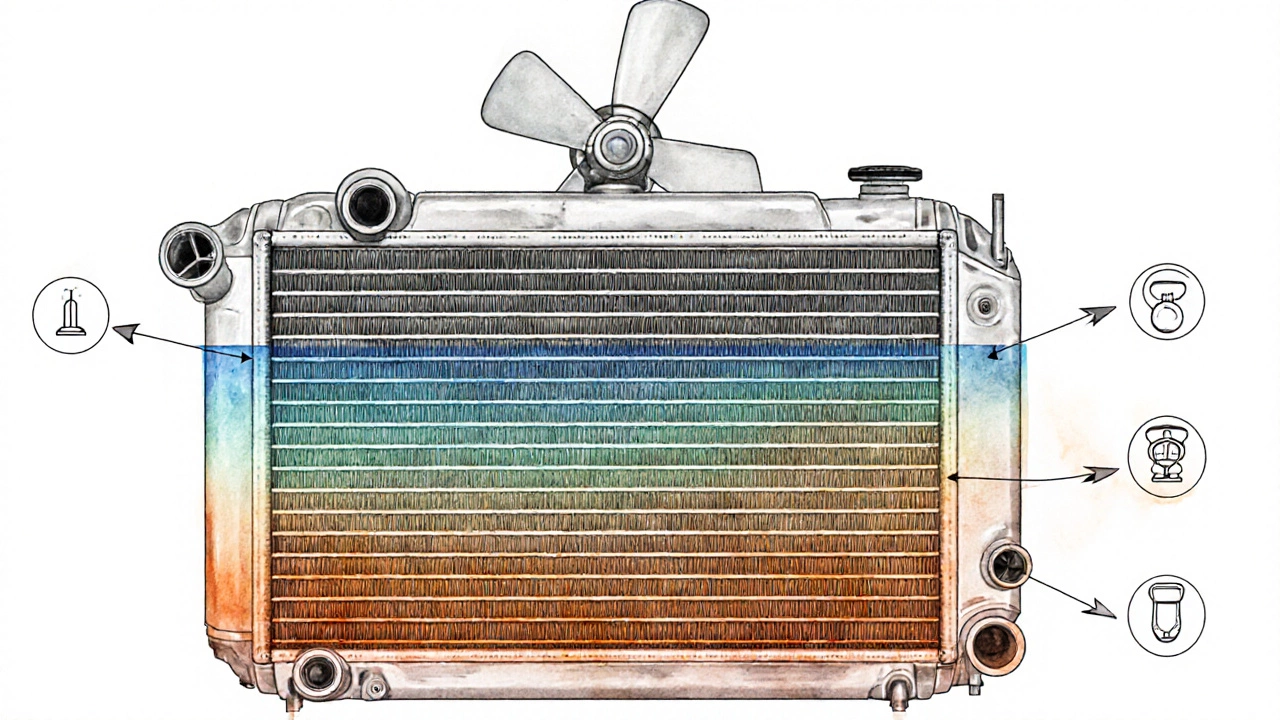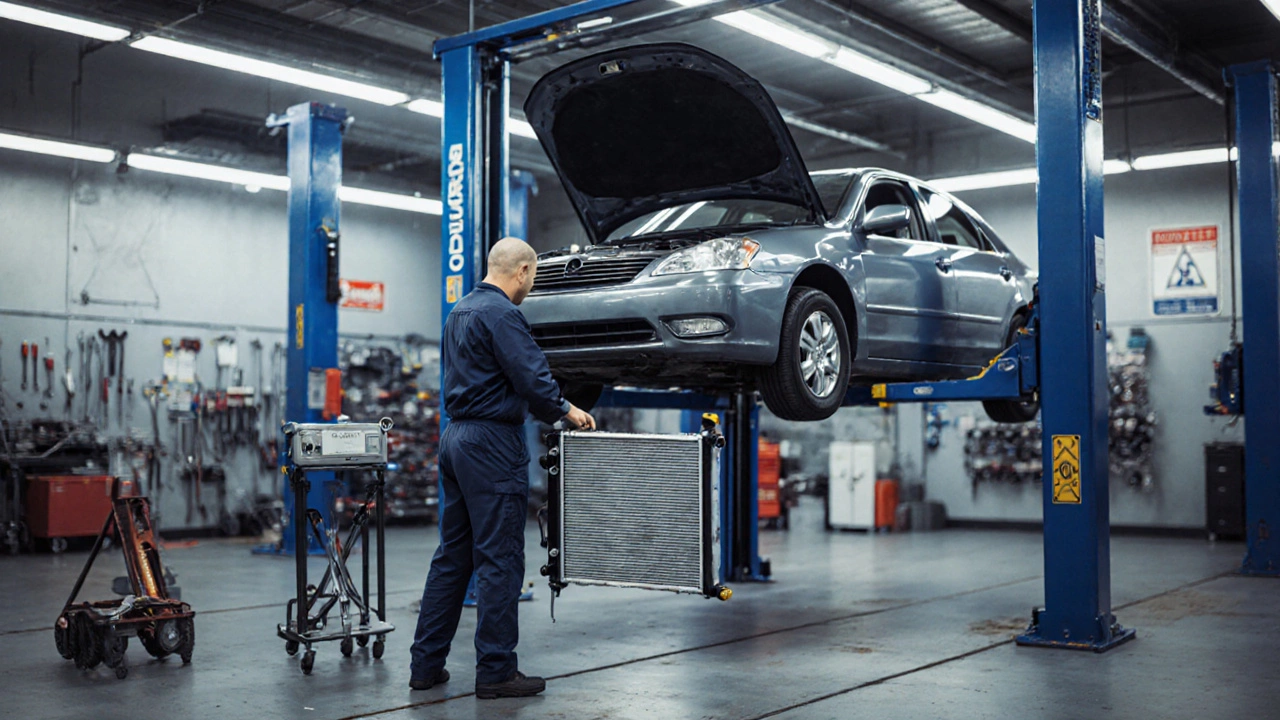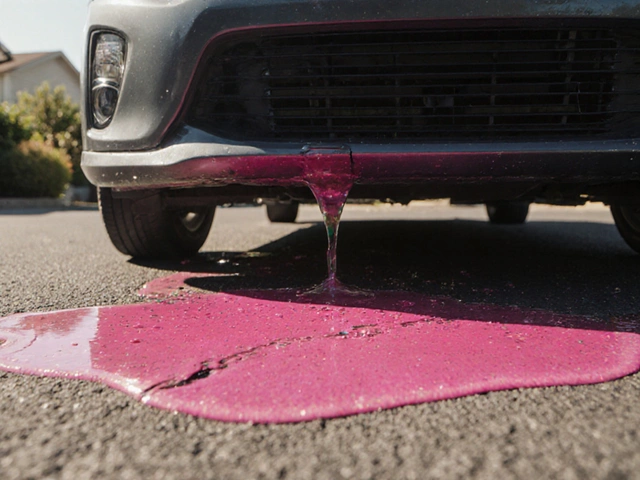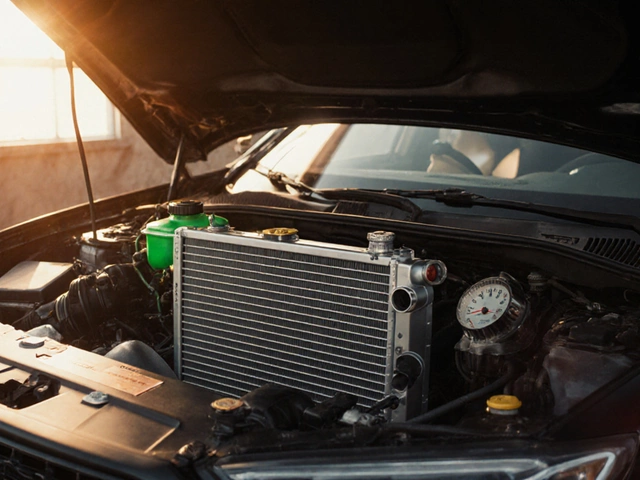Key Takeaways
- Leaking coolant, persistent overheating, and low coolant levels are the three most reliable clues that your radiator may need swapping.
- Perform a visual inspection, pressure test, and temperature check before deciding on a full radiator replacement.
- Corrosion, clogged fins, and a damaged radiator cap are common culprits that can be fixed with a flush or repair, saving you money.
- Regular maintenance-coolant flush every 2‑3 years and keeping the front grill clear-extends radiator life.
- If you notice any of the warning signs, act quickly to avoid engine damage or costly breakdowns.
When your car’s radiator is a heat exchanger that transfers heat from the engine coolant to the surrounding air, maintaining optimal engine temperature, it does a lot of heavy lifting behind the scenes. Most drivers only notice a problem when something goes wrong. This guide breaks down exactly how to tell if that heavy‑lifting component is on its last legs.
How a Radiator Works - The Basics
Inside the radiator, thousands of tiny tubes are surrounded by thin metal fins. Hot coolant from the engine flows through these tubes, while the fins increase surface area so that airflow-generated by the radiator fan and vehicle’s forward motion-cools the fluid before it returns to the engine.
The system relies on three key pieces working together:
- Coolant (a mixture of water and antifreeze) that carries heat.
- The water pump, which circulates coolant through the engine and radiator.
- The thermostat, which opens and closes to regulate flow based on temperature.
If any of these elements fail, the radiator can overheat, leak, or lose pressure-each a red flag that replacement might be needed.
Top Warning Signs Your Radiator May Need Replacing
Below are the most common symptoms you’ll see on the road or in the garage. Spotting them early can prevent a complete engine shutdown.
- Coolant leaks: Puddles of pink, green, or orange fluid under the car usually point to a cracked radiator tank or damaged seams.
- Persistent overheating: The temperature gauge hovers in the red zone even after the fan kicks on.
- Low coolant level without visible leaks-often caused by internal corrosion allowing coolant to seep into the engine.
- Steam from the front of the vehicle, especially after a short drive, indicates a ruptured radiator or loose hose.
- Strange odors: A sweet, gasoline‑like smell can mean coolant is boiling over and being drawn into the intake.
- Weak heater inside the cabin-if the heater core, which is essentially a small radiator, is clogged, it can signal broader radiator issues.
- Visible rust or corrosion on the radiator surface or fins, which reduces heat transfer efficiency.

Step‑by‑Step Diagnostic Checklist
Before you order a new part, run through this quick checklist. Most of these steps need only basic tools and a safe, flat surface.
- Inspect for leaks: Look under the car after a short drive. Use a flashlight to examine the radiator seams, tank, and surrounding hoses.
- Check coolant level and condition: Open the radiator cap (only when the engine is cool) and note the fluid’s color and any debris.
- Perform a pressure test: Attach a radiator pressure tester to the cap opening. Pressurize to the manufacturer‑specified psi (usually 15‑16psi). A steady loss indicates a leak.
- Measure inlet and outlet temperatures: Use an infrared thermometer. The inlet should be close to the engine’s operating temperature (around 190°F / 88°C) and the outlet about 30‑40°F cooler. Smaller temperature drop suggests reduced heat exchange.
- Examine the fan operation: With the engine at idle, ensure the electric or clutch‑driven fan engages when the coolant reaches the thermostat’s opening point.
- Inspect hoses and clamps: Look for bulging, cracking, or loose clamps that could mimic a radiator leak.
- Check for rust on fins: Use a soft brush to clear any debris. If fins are severely corroded, airflow is compromised.
If two or more of these checks point to a faulty radiator, replacement is the safest route.
Repair vs. Replace - When to Choose Each Option
| Issue | Repair Viability | When to Replace |
|---|---|---|
| Small leak in a seam | Radiator sealant or solder patch | Leak recurring after repair or large seam break |
| Clogged fins | Professional cleaning, brush, water pressure | Fins heavily corroded or missing |
| Cracked tank | Epoxy or resin kit (temporary) | Structural damage, visible cracks >1cm |
| Failed thermostat | Replace thermostat only | Multiple failures indicating broader overheating |
If the repair costs more than 50% of a new unit, or if the radiator is over five years old, most mechanics recommend a full swap. A fresh radiator restores optimal heat flow and reduces the strain on the water pump and thermostat.

What to Expect During a Radiator Replacement
A typical shop job takes 1.5‑2hours and costs between £120‑£250 for standard aluminium units. Here's what happens:
- Vehicle is lifted and the cooling system is drained.
- All hoses, the thermostat, and the pressure cap are removed.
- The old radiator is taken out, and the mounting brackets are inspected.
- A new radiator-often pre‑filled with coolant for convenience-is bolted in place.
- Hoses and the cap are reinstalled, the system is refilled, and the air is bled using a pressure‑bleed valve.
- Engine is run to confirm proper temperature rise and fan activation.
After the job, ask for a pressure test report. It’s a quick way to verify there are no hidden leaks.
Preventive Maintenance to Extend Radiator Life
Consistent care can add years to your radiator’s service life. Follow these simple habits:
- Flush the cooling system every 30,000km or every 2‑3years, using a compatible coolant flush kit.
- Never top up coolant with plain water; the antifreeze protects against corrosion and boiling.
- Keep the front grill clear of leaves and debris so the fan can draw maximum airflow.
- Inspect the radiator cap annually; a worn seal can cause pressure loss.
- Check the condition of the radiator hoses for soft spots or cracks.
- Monitor the temperature gauge; a gradual shift toward hotter readings often precedes a problem.
By staying ahead of the symptoms, you avoid the sudden overheating that forces a roadside repair.
Frequently Asked Questions
Can I drive with a leaking radiator?
It’s risky. Even a small leak reduces coolant volume, causing the engine to overheat quickly. If you notice a leak, stop the vehicle, let it cool, and arrange a tow to a garage.
What does a white smoke from the front of the car mean?
White steam usually indicates coolant boiling over, often from a blocked radiator or a failed thermostat. Check the coolant level and temperature gauge immediately.
Is a radiator flush worth the cost?
Yes, especially if the coolant looks rusty or the vehicle is over two years old. Flushing removes debris that can clog fins and improves heat transfer, extending radiator life.
How often should I replace the radiator cap?
Every 3‑5years, or sooner if you notice the pressure gauge fluctuating. A faulty cap can let pressure escape, leading to coolant loss and overheating.
My heater isn’t blowing warm air-does that mean the radiator needs replacing?
Not always. The heater core, a small radiator inside the cabin, can become clogged. However, if the main radiator is also leaking or overheating, the issue may be systemic, warranting a full replacement.


